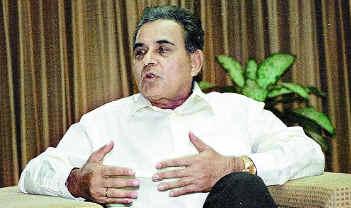
Manufacturers to the world

Our Special Correspondent
Fewer and fewer famous brands actually make what they sell. With protection laws in place, companies have begun to outsource. And it is here that Electronic Manufacturing Service companies are playing a stellar role, says M.L. Tandon, Head of Celetron India.
“NOKIA does not make the cell-phones that we carry around. It is the EMS (Electronic Manufacturing Services) companies that do the job for the company,” says Mr M.L. Tandon, Head of Celetron India, a fast-expanding EMS company located at the SEEPZ Special Economic Zone in Mumbai which is hopeful of becoming a billion-dollar hardware firm.
Not many would, perhaps, be aware of the stellar role that EMS companies play in the making of the modern world. These companies provide vital inputs to almost all modern gadgets that one uses.
Highly technical in nature and usually away from the public glare, these companies have been silently making a mark in the global market. One such company is Celetron India.
Celetron exports PC components such as power supply, head stacks for disk drives and memory cards, with a profit margin that has entered the rarefied 12 per cent region.
In an interview with Business Line, Mr Tandon speaks about the EMS sector and his company’s future plans. Excerpts:
What role is the EMS industry playing in driving modernisation?
Today, we are all very familiar with modern gadgets that define urban and modern living, such as the Palm PDA, the Nokia cell-phone, the IBM notebook and the Microsoft Xbox. These are high-technology gadgets and the brands are ubiquitous, but what many people might not know is that these products are manufactured not by the companies themselves but by a global industry called the EMS industry.
EMS can be termed manufacturers to the world. Fewer and fewer famous brands actually make what they sell. Previously, technology was not accessible but with protection laws in place, companies have begun to outsource. Manufacturing for these companies is becoming capital- and labour-intensive.
What are the advantages that EMS companies provide to the manufacturing companies?
Many advantages. These include rapid time to market as product lifecycle shortens, rapid time to higher volume, sharing of components, asset deployment flexibility, leading-edge manufacturing with reduction in costs, significantly reduced need for capital and provision of buffer to demand fluctuations in the user industry.
Can you tell us something about the evolution of the EMS industry?
The EMS industry has evolved from small- and medium-enterprise entrepreneurs, commonly referred to as contract manufacturers, to large service providers. Till the 1980s, the contract manufacturers limited their scope to a few specific functions, such as board stuffing. Over the years, the digital revolution expanded and demands from the consumer, telecom, computer and network companies increased significantly. As a result, these contract manufacturers started receiving more and more projects and indulging in end-to-end services.
How did the consolidation take place?
The 1990s can be termed as the decade of acquisitions for the EMS industry, as growth through acquisition was a strategic route adopted by the companies. Today, consolidation is in the form of larger EMS entities acquiring smaller competitors and buying their consumers’ factories at low prices.
Could you tell us something about the global EMS scenario?
The technology levels are high in companies catering to consumer electronics, communications, industrial electronics and networking and are by far the highest in medical electronics, automotive electronics and avionics industry.
A significant development has been that China has moved ahead because of the vast infrastructure availability; it is to be noted here that China has over 500 SEZs today while India has four.
What about the Indian scenario?
In the EMS sector, India can become the preferred alternative and thus emerge as a strong contender in the global market. I feel that Indian companies should equip themselves with technology, be well versed in design, new product innovation and complex technology. We need to avoid duplication of products and inculcate better financial discipline. Trust and transparency in EMS operations will bring increased confidence in outsourcing relationships. If these steps are taken, India stands the chance of becoming a global player in the world trade of electronics and information technology, which is projected to have an estimated market size above the $1-trillion mark by 2008.
What are Celetron’s plans?
We are expanding capacity to meet local demand. The Indian arm exports PC components, such as power supply products, head stacks for disk drives and memory cards. We plan to expand capacities, and we are in the process of setting up a production facility in Pondicherry. We hope to touch revenues of $1 billion from the domestic market and from exports.
To read the original article, please click here.





